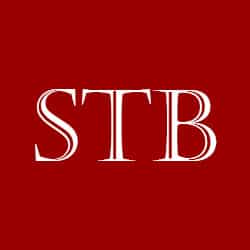Today I saw that one of my brother seminarians from KC was getting beat up on his own blog for defending Our Lady and Sacred Tradition. Here is the response I published in his defense against someone who was arguing that the Bible teaches against Tradition (Read the full thread here):
Since Andrew has already done a great job of responding to these questions with some of the standard explanations, I thought maybe I could add something here from a different point of view, and that is to look at the Church’s liturgical history. What does the public prayer of the Church over the last 2000 years teach about such things as canon of Sacred Scripture and prayer to Mary and the saints?
Lex orandi, lex credendi: The rule of prayer is the rule of belief. This phrase from the 4th century is very useful here. The teachings of the Church as we know them today have been formed primarily by the liturgy of the Church. Indeed, the word “orthodox” which we commonly regard as meaning “believing correctly” really means “correct praise,” praying correctly.
While all Christians accept that the Holy Spirit has inspired the writing of Sacred Scripture, the collection of books that we accept as the canon did not come about by trying to discern which books were inspired and which weren’t. The official canon was formed not based on doctrine but on liturgical tradition. When the fathers of the Synod of Rome met in 381 (and later the Council fathers of Carthage and Hippo) the question of which books to include in the canon was answered simply, “What texts are used in the Sacred Liturgy of the major Christian churches of the time?”
Note that this is purely a matter of Tradition. Jesus taught that the Holy Spirit would protect his Church from error and thus the council fathers believed that if there was a tradition of reading certain accounts of the life of Jesus in the Sacred Liturgy then Holy Spirit must have inspired this acceptance. They looked at what texts were used in Jerusalem, Antioch, Alexandria, Rome, etc. and collected them together to form a collection that we now know as the New Testament.
This collecting was not only a product of the liturgy, but was in fact done with only the liturgy in mind. The canon of scripture was not created so that people would have a difinitive list of books to study and use to use in debate. It was created as an official list of books that were approved for use in the liturgy. No one studied the books of the canon accept to preach on them in the liturgy. The canon was purely a liturgical concept. If it was in the canon it could be read at the liturgy, otherwise it was forbidden for use at the liturgy.
With the above in mind, it should be easy to see that it is a rediculous falacy to suggest that Sacred Scripture argues against Sacred Tradition. It’s not a question really of scripture or trandition, or even scripture and tradition. Scripture is a product of Tradition. Scriptue is part of Tradition that happens to be written down and is approved for use in the liturgy. If you believe that the New Testament is divinely inspired by the Holy Spirit, then you necessarily believe that the Tradition of the Church which created the Scripture is divinely inspired because scripture is just one part of that Tradition.
With regard to Mary and the saints, the liturgical tradition is again our teacher. Centuries before the canon of scripture was proclaimed, the Church was offering the liturgy in honor of the saints and in supplication to them. This is particularly true of the martyrs. As early as the first century we have evidence of the faithful gathering at the tombs of the martyrs on the anniversary of their death to ask for their prayers. The early Christians believed that the martyrs were powerful intercessors and this is shown in the liturgical history of not just private, but very official public prayers offered to them.
As to the Blessed Mother, it is interesting to think that, while the Christians argued until 325 (and beyond) about such critical things as whether Jesus was God and until well into the 5th century as to whether God was Trinity, they were sure from the the very beginning that Mary was without sin, remained a virgin her entire life, was assumed into heaven, and heard their prayers. We know this because we know that the liturgy was celebrated in honor of these beliefs from these very early times.
To summarize, the Church’s Tradition, inspired by the Holy Spirit, has formed the way that Christians have prayed and the rule of prayer has formed the rule of belief from the beginning. This Tradition has given us first and foremost the liturgy from which comes the Eucharist, the center of all Christian life. From the liturgy we have the canon of Sacred Scripture, the recorded words of the early teachers of the Tradition. If non-Catholics find that our list of approved liturgical books brings them closer to Christ, maybe some of the other lists the Church has created could do the same. The list list of the saints is a good list to look at next. You’ll find Mary at the top of the list.

2 comments
Tunink to the rescue! Thanks!
Andrew
stud. tunink. you’re the man.
matty